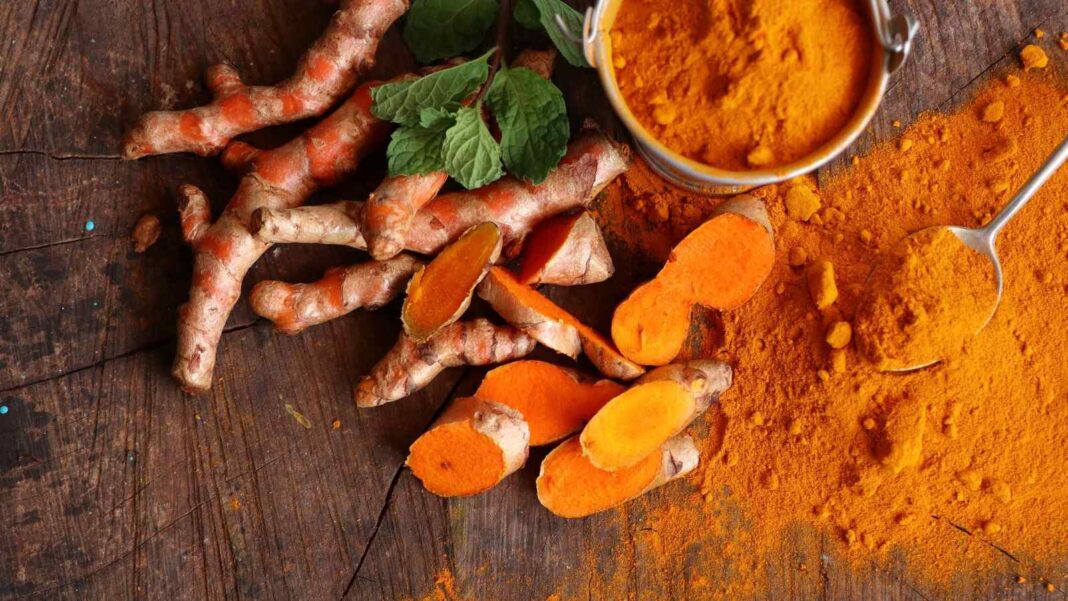Are you looking for a natural solution to get a healthy glow? Try using turmeric for skin rejuvenation and acne treatment.
If you are aiming for glass-like skin without exposing yourself to harmful chemicals, turmeric can be a promising natural solution for you. For centuries, turmeric has held a revered place in both culinary and medicinal traditions, particularly within the realm of skincare. This vibrant, golden spice, derived from the Curcuma longa plant, extends far beyond its role in adding flavour to our favourite dishes. Its potent properties have often been used to treat many skin concerns, transforming it into a cherished natural remedy. Know the numerous benefits of turmeric for your skin and how to use the spice effectively.
4 benefits of turmeric for skin
When it comes to skincare, there are many benefits of including turmeric in your beauty routine. Here is how they help you:
1. Rich in anti-inflammatory properties
Turmeric’s strong anti-inflammatory properties make it an effective natural remedy for a variety of skin irritations, as found in a study published in the journal Advances in Experimental Medicine in Biology. It efficiently reduces the redness and pain associated with persistent conditions such as eczema and psoriasis, providing relief from chronic inflammation. Plus, using turmeric for skin can considerably soothe the irritated skin associated with acne, lowering the intensity and number of outbreaks. Its ability to target and reduce inflammation results in a more balanced and pleasant appearance, making it a popular component in natural skincare routines.

2. Reduces premature ageing
Turmeric, which is high in antioxidants, helps to protect the skin from the detrimental effects of free radicals, as found in a study published in the International Journal of Molecular Sciences. These unstable chemicals hasten premature ageing, resulting in wrinkles and fine lines. Using turmeric for skin fosters a more youthful look and maintains skin suppleness by neutralising free radicals. Plus, its preventive qualities protect the skin from external stresses like UV radiation and pollution, which can cause significant damage. Turmeric’s ability to counteract free radicals while also protecting the environment makes it an important element in maintaining skin health and vitality.
3. Gives glowing skin
Turmeric’s skin-brightening properties are widely recognised for treating hyperpigmentation and irregular skin tone. Its primary ingredient, curcumin, inhibits melanin formation, significantly minimising the appearance of dark patches and imperfections, as found in a study published in the journal Phytotherapy Research. This results in a more even complexion with less discolouration. Regular use can result in a perceptible evenness of skin tone, promoting a brighter and more radiant glow. The spice’s natural ingredients help to give you a revitalised look, providing a healthy and glowing complexion.
4. Helps in acne treatment
Turmeric’s natural antibacterial and antiseptic properties make it an effective acne treatment. “It prevents breakouts and promotes cleaner skin by focusing on and reducing acne-causing bacteria. This natural method of acne treatment avoids the need for harsh chemicals and provides a softer alternative,” says dermatologist Dr Priyanka Kuri. Turmeric not only treats active acne, but it also helps to reduce the appearance of scars. Its anti-inflammatory characteristics help the healing process by lowering redness and increasing tissue restoration. This can result in smoother skin texture and reduced appearance of post-acne blemishes.

How to use turmeric for skin?
Here are DIY skin packs and scrubs made from turmeric for skin:
1. Turmeric and honey face mask:
- Mix 1 teaspoon of turmeric powder with 1 tablespoon of raw honey.
- Apply the paste evenly to your face, avoiding the eye area.
- Leave it on for 15-20 minutes, then rinse with warm water.
2. Turmeric and yoghurt face mask:
- Combine 1 teaspoon of turmeric powder with 2 tablespoons of plain yoghurt.
- Apply the mixture to your face and neck.
- Leave it on for 15 minutes, then rinse off.
3. Turmeric spot treatment:
- Mix a small amount of turmeric powder with a few drops of water or lemon juice to form a thick paste.
- Apply the paste directly to acne spots or dark spots.
- Leave it on for 10-15 minutes, then rinse.

4. Turmeric and aloe vera gel mask:
- Mix 1 teaspoon of turmeric powder with 2 tablespoons of aloe vera gel.
- Apply to your face.
- Leave on for 20 minutes and rinse with water.
5. Turmeric and coconut oil mask/scrub:
- Mix 1 teaspoon of turmeric powder with 1 tablespoon of coconut oil.
- For a scrub, add a half teaspoon of fine ground rice flour, or chickpea flour.
- Apply to the face, and gently massage in a circular motion.
- Leave on for 10 minutes, and rinse with warm water.
Things to keep in mind
- Turmeric can stain the skin yellow, so it’s advisable to use a small amount and test it on a less visible area first.
- Rinse thoroughly and use a gentle cleanser to remove any residue.
- Avoid using turmeric on broken or irritated skin.
If you have sensitive skin, consult a dermatologist before using turmeric topically.
Related FAQs
Is turmeric safe for sensitive skin?
While generally safe, turmeric can irritate sensitive skin. It’s crucial to perform a patch test before applying it to your face. If irritation occurs, discontinue use.
How often should I use turmeric on my skin?
For most skin types, using a turmeric mask or treatment 1-2 times a week is sufficient. If you have sensitive skin, start with once a week or less.









